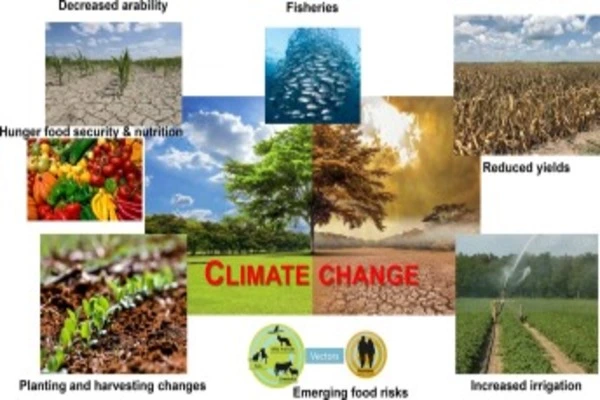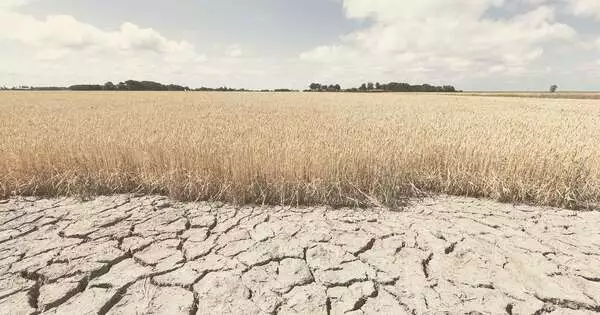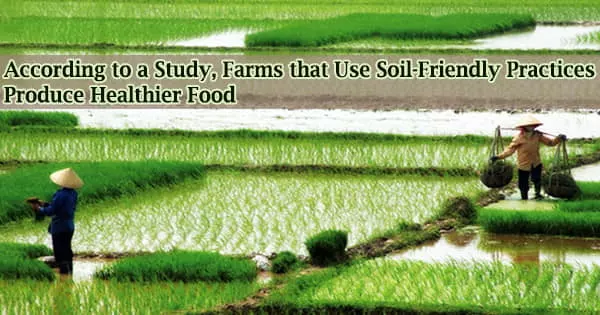Climate change is now a serious threat to global food security, recent research shows. A report released by the International Panel of Experts on Sustainable Food Systems (IPES) in May described climate change as an “endemic and widespread” risk to food supplies. This is also exacerbated by rising living costs and the conflict in Ukraine.
Droughts, heatwaves, flooding, and new pests are preventing producers from obtaining a reliable crop in many areas of the world. Since pre-industrial levels, global temperatures have increased by 1.1°C. The Intergovernmental Panel on Climate Change (IPCC) has warned that if that reaches 1.5°C, around 8 per cent of the world’s farmland will become unsuitable for agriculture.
Crop productivity drops in higher temperatures because of dehydration, reduction in pollination and slower photosynthesis. When hit by elevated temperatures and droughts, plant defences fail and crops become susceptible to attacks by insects and disease-inducing pathogens.
Extreme weather is also causing difficulties for livestock and fisheries. The problems are set to worsen if efforts are not made to tackle carbon emissions. The IPCC recently released a report that confirmed that human-induced climate change is making droughts, floods, wildfires, and heatwaves more severe and more frequent.
Extreme weather is also causing difficulties for livestock and fisheries. The problems are set to worsen if efforts are not made to tackle carbon emissions. Crop productivity drops in higher temperatures because of dehydration, reduction in pollination and slower photosynthesis. When hit by elevated temperatures and droughts, plant defences fail and crops become susceptible to attacks by insects and disease-inducing pathogens.
According to the UN, the combined effects of climate change, conflict, and poverty could see food prices rise by an additional 8.5 per cent by 2027. It warns that millions of people are already facing acute food insecurity.
Cost of staple cereal crops soaring due to climate change
This summer alone, heatwaves withered farmland in India, fires in Tunisia destroyed fields of grain, and flooding in China damaged almost 100,000 hectares of crops. Staple foods such as wheat, rice, corn, and soybean have been decimated around the world causing prices to soar.
Rising costs of these key crops have plunged populations in Africa, Asia, and South America into critical food poverty. In Somalia, for example, a 400 gram can of wheat has doubled in price since February. In India, wheat flour exports have been restricted to ease soaring local prices.

Within Europe, drought in northern Italy’s agricultural heartland has seen the production of crops like rice and corn slashed. Extreme heat and lack of rainfall have also affected tomatoes, grapes, and olives. The IPES report in May found that wheat prices hit a 14-year peak in March and corn prices reached the highest ever recorded. Staple foods are also being affected by new pests and pathogens. In the US this year, avian flu caused an almost 300 percent increase in the price of eggs.
Seafood becomes scarcer with rising sea temperatures
Europe’s seas are also suffering heat. Iceland’s waters are losing fish central to the local diet as capelin and cod swim north to find cooler temperatures. But shellfish such as oysters, clams, and mussels cannot escape the warming waters. In northern Italy, crustaceans are dying off in the Adriatic sea.
In the Po Delta, where the vast Po river flows into the sea, clams and mussels are particularly prized because of the unique aquatic conditions where freshwater and saltwater mix. Now, fishermen say the shellfish are suffering because the historically low water levels of the river mean very little freshwater flowing into the delta causing it to become too salty.
















